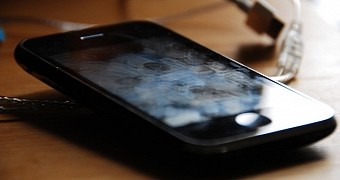Touchscreens might be the best way to interact with a certain device in the modern world, but at the same time, they’re also the right environment for some bacteria and viruses to transmit from one human being to another, so it’s no surprise that tech giants are looking into ways to prevent this.
Microsoft is one of the companies that are apparently planning to do something about this, so the software giant has recently been granted a patent for what seems to be a technology that can disinfect touch-capable displays and kill bacteria and viruses.
According to the patent description (via WMPU), the new technology is based on a very thin light transparent film material that’s placed on the display and with UV light can disinfect the display when human input is detected.
How it works
“UV light is emitted from a UV light source into an edge of the transparent film material in order to transfer the UV light through the transparent film material while remaining in the transparent film material through total internal reflection effect. Some UV light exits the transparent film material at points of contact to disinfect fingertips and immediate surrounding areas through the frustrated total internal reflection effect,” the patent description reads.
Needless to say, this new tech could replace third-party screen covers that can kill bacteria and viruses and offer a more convenient and affordable way to disinfect touchscreens, but it remains to be seen if there’s indeed an effective way to implement it into smartphone designs that are currently available on the market or that could launch soon.
Obviously, this technology is still in the works right now, so it could take a while until we see it in product, but if Microsoft is really serious about offering such functionality, there’s no doubt that its smartphones would be a little bit more appealing.
Details are rather vague right now, so we’ve reached out to Microsoft to ask for more information on this new tech, and we’ll get back to you once we get an answer.

 14 DAY TRIAL //
14 DAY TRIAL //